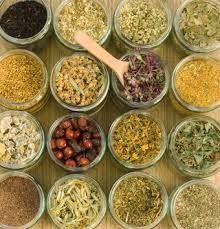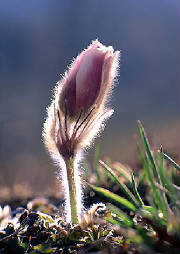HOMEOPATHY
HEALING TO THE CORE
The Goal
In Homeopathy (the classical approach), it is the goal of the practitioner to fully understand the entire nature of an individual, in order to best find the similimum (the remedy that will most effectively bring about a curative response.)
The Sensation Approach
Rajan Sankaran has written several books and lectured extensively over the past several years, teaching this method, or system. What is understood is that within each individual there is a song, or melody that is the healthy, balanced self.
At some point, early in life, another song began playing. This song, over time, became louder and louder, so that was all the individual could hear. This “other” song was the expression of the unbalance or illness within the self.
In our attempt to treat a patient, we need to hear what that other song is, how it expresses itself, and what are the experiences of the individual that hears this discordant, or out of balance melody.
We attempt to have the patient lead us inward to their deepest experience, their vital or core sensation. When we have heard what that sensation is, that appears in all aspects of the patient’s life, dreams and hobbies, we have a greater confidence in giving the most accurate Homeopathic remedy, to bring about a healing response.
In our attempt to have the patient lead us on this inner journey, we attempt to guide them by asking, “tell me more about that”. Or we’ll say, “what is that experience like, how does it feel, describe that more,” so I can better understand. Even though the patient has explained very well what they’ve felt and experienced, we frequently ask, “tell me more”, in order to allow the patient to go even deeper to their experience.
The expression of the patient often sounds like non-sense, which is normal as it is expression from the unconscious mind.
By hearing this expression, we are best able to differentiate what kingdom the patient’s remedy will be chosen from. Whether it is from a Plant, Mineral or Animal source.
A State of Imbalance
What the patient comes in to be treated for is frequently the thread to where there is the greatest energy blockage, or greatest imbalance. The patient is often oblivious to their own deepest limitations and pathology. It takes the perception and trained awareness of the practitioner to hear and see where the energy is blocked, and what is causing the imbalance and illness. The Doctor is always listening to hear, what is the “vital sensation” of the patient, and what is their deepest experience of that sensation.
Achieving Balance
The chosen remedy has been prepared in a homeopathic pharmacy where the original Plant, Mineral, or Animal preparation has been extracted and enhanced energetically. The practitioner is intending to match the vibratory frequency of the patient (as seen by the out of balance state, or symptom expression, and the “vital sensation”) with the known expression of the remedy.
As the remedy is taken over weeks and months, it acts as a catalyst to support the body, the defense and healing mechanism, the ‘chi” of the individual, to be enhanced and in turn become more balanced.
As balance is achieved, the symptoms disappear and a more balanced sense of well being is felt by the patient on the Mental, Emotional and Physical levels.
HOW DID HOMEOPATHY ORIGINATE?
The actual practice of homeopathy dates to the late 1700’s when a German physician named Samuel Hahnemann discovered that a cure for malaria was cinchona bark (also known as quinine). The explanation he found while translating medical documents was that the bitter quality of the bark was what provided the medicinal aspect in treating malaria.
Doubting that the bitter quality of quinine was alone the explanation of its cure for malaria, Hahnemann used himself as the first prover by ingesting the bark daily, so he actually was able to manifest the symptoms of malaria: the sweats, the chills, the fever, the anxiety, the weakness, etc. When he stopped ingesting the bark, the symptoms gradually subsided. He realized, from his reading of Hippocrates (of the 5th Century B.C.) who spoke of healing by likes and healing by opposites, that Hippocrates was referring to Homeopathy and Allopathy. Homeo=like and pathos=suffering. Allopathy, or what is now known as traditional western medicine, means allo=against or opposite, pathos=suffering.
So Hahnemann saw that as he was able to mimic in himself the symptoms of the disease malaria by the Peruvian bark, this same substance was able to cure patients with the disease. This was the birth of homeopathy. By giving a substance to a sensitive, healthy person which produces symptoms, it was found that a sick person with those same symptoms could be cured with the same substance.
Dr. Hahnemann went on to research hundreds of other plant, mineral and animal substances and to document the healing properties of each on the mental and emotional as well as physical aspects of patients. There are now over 2,000 homeopathic medicines (or remedies).
 When did Homeopathy come to the U.S.?
When did Homeopathy come to the U.S.?
Homeopathy at first spread slowly in Europe due to strong skepticism (not unlike in the U.S. today). As its effectiveness was witnessed, more M.D.s began to convert their practice of medicine. By the early 20th century, homeopathy had become quite popular in America. There were over 100 homeopathic hospitals, 50 homeopathic medical schools and one if five M.D.s were homeopaths. Homeopathy saw great success in the treatment of many epidemics in the late 1800s e.g. typhoid, influenza, cholera, malaria, etc. It wasn’t until the birth of the pharmaceutical industry and its marriage with the AMA (American Medical Association) that the homeopathic profession saw itself on the brink of extinction in this country. While homeopathy continued to flourish in Europe, India, and South America, in this country it was nearly extinguished. Slowly, in the 1970s, homeopathy began to experience a resurgence in this country as professionals of all medical specialties began to study the information that had been preserved and to experience the benefits on their patients. Now there are excellent homeopaths who are medical doctors (M.D.s), naturopathic doctors (N.M.D.s), chiropractors (D.C.s ), osteopathic doctors (D.O.s ), nurse practitioners, etc.
Is this the same as the over-the-counter homeopathic remedies one finds in health food stores?
As always, people looking for shortcuts in healing have formulated combination homeopathic preparations sold in drug and health food stores. These are at best good for temporary symptomatic relief and are not deep acting, which means they will not change the underlying predisposition for a health problem, nor do they work on the mental and emotional aspects of an individual.
What is Classical Homeopathy?
Computers and electronic diagnostic machines have also been developed to facilitate the ease of finding the correct remedy. Even Samuel Hahnemann realized the most effective treatment was in treating the whole individual, not just the symptoms. We call this constitutional prescribing, treating the whole constitution of the patient. The classical approach is according to the principles set forth by Hahnemann, using a single preparation of the precise potency (strength) to match the individual and his or her suffering. The practitioner needs to carefully listen and observe the patient to best understand his/her suffering whether she/he is an infant, child or adult. Once the appropriate remedy has been given, the practitioner needs to understand the healing process as it unfolds in the patient. Even though the patient may remain on the same remedy for many years, the challenge is to maintain the proper continuity and flow of the progress without disrupting the process, and to know how to treat acute crises and ailments that arise in the course of treatment.


